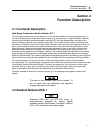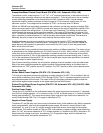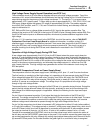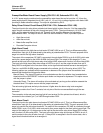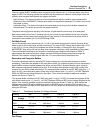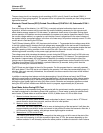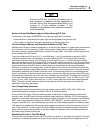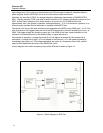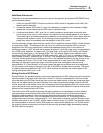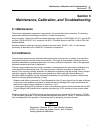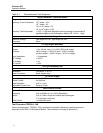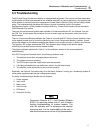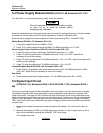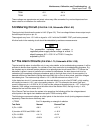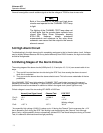
Function Description
Readout Module876A-1
4
4-9
Safe/Reset Sub-circuits
The three sub-circuits described below are all involved in the operation of the green SAFE/RESET lamp
and its associated alarm:
1. A latch for the SAFE/RESET lamp built around four NOR circuits of integrated circuit U202, with
several auxiliary elements.
2. A threshold detector U201 (pins 8, 9, and 10) ascertains by comparison with a standard voltage
whether the current produced by the ECS ramp is sufficiently high.
3. A one-shot multivibrator, U207, pins 9 to 15, which provides an enable signal to allow the latch
circuit to flop from a pass to a fail condition if the signal from the threshold detector is a fail signal.
This enable signal is necessary because the detector current during the ECS test is higher than the
average normal radiation current. The monitoring circuits must therefore be examined just at the
proper time, which is immediately after the cessation of the ECS current.
It will be noted that a trigger signal from the counter U205 is applied to the base of Q207, whose collector
is connected to Q203. . The purpose of this sub-circuit is to short-circuit capacitor C209, so that the
integration of the ECS may proceed from a stable and repeatable starting point. If the system is a
functioning properly, a 2.57 volt level will be present at terminal 1 at the top of the ramp, corresponding to
the 103 R/h meter indication. If voltage at pin 1 is below 2.48 V at this point, ECS circuitry will indicate
channel failure. See Figure 5-1 and drawing 876A-1-3D. This voltage, applied to the integrator circuit
consisting of R218, R224, C209 and the OP AMP circuit U201, pins 12, 13 and 14, produces a linearly
failing voltage of about 2 V/second at pin 14 of U201. This voltage begins just above 0 V. When it reaches
-6.2 volts, a quick switching action takes place in U201, the important result being a sharp change in the
output voltage (pin 8) from +15 to 0 volts. A low (approximately 0 V) input at pin 10 of U208 results
ultimately in a safe report (green light stays on and the alarm relay is energized); whereas a high
(approximately 15 V) input results in a fail report (green light goes out and alarm relay is de-energized).
For any change in the output of the latch circuit (pin 10 of U202) an enable pulse is required. This signal
is output by one-shot multivibrator U207, pin 9, which receives its input from one of the outputs of the
muting multivibrator U207 (pins 1 to 8).
Muting Circuits of ECS Board
During ECS test, it is possible that the normal current generated by the ECS voltage ramp will exceed the
trip-level chosen for the high and/or alert alarm circuits. To avoid an unwanted alarm, the alarm circuits
are muted during the ECS test--that is the alarm circuits are made inactive, so that their lamps and alarm
relays will not respond during the test. Effectively, this is done by generating voltage pulses in the ECS
circuits which last for the duration of the test, and applying them at appropriate points in the alarm circuits
on the relay driver board, so that the alarm circuitry will be momentarily disabled. Computer and recorder
buffers are also muted during the ECS test.
The circuits of the ECS board that generate the muting pulses are, to some degree, involved with the
ramp-generating and monitoring circuits of the ECS board, since all must be in time synchronization.
Generally speaking, however, the most important elements of the muting circuits are contained in
integrated circuit U207 (pins 1 to 8) and integrated circuit U206 (pins 9 to 15). The muting pulse is a
voltage which starts from zero, rises abruptly to +15 V, lasts about six seconds, and falls abruptly to zero.
Initiation takes place on pin 5 of U207, and the output is taken from pin 13 of U208. The signal for muting
the alarms appears on terminal 9 of the ECS board, but a second path leading to pin 12 of U203 serves
the auxiliary purpose of preventing re-initiation of the manually generated trigger produced by pressing
the ECS button on the panel.



